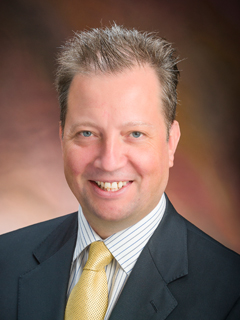HOW CAN WE HELP YOU? Call 1-800-TRY-CHOP
Lurie Family Foundations MEG Imaging Center
The Lurie Family Foundations MEG Imaging Center encompasses two floors of the Children's Seashore House on the Children's Hospital of Philadelphia Philadelphia Campus. Directed by Timothy Roberts, PhD, it is the technological home for more than a dozen PhD faculty and 20-30 staff focused on neuroscience imaging, with special emphasis on neurodevelopmental disorders.
Housing a total of three whole-head magnetoencephalography (MEG) devices (one purpose-designed by Dr. Roberts and his team), two 3T magnetic resonance imaging (MRI) systems and a stand-alone electroencephalography/event-related potential (EEG/ERP) laboratory, the Center is a neuroscience imaging acquisition powerhouse. Augmented by advanced analytics, organized via the FlyWheel imaging data management infrastructure, and tightly coupled to CHOP high-performance computing, the Center offers access to state-of-the-art and emerging techniques of acquisition, analysis, and machine learning for image-based clinical neuroscience, with brain activity characterized in space, time, and frequency and augmented by assays of neurophysiological and biochemical quantities to support mechanistic interpretations.
Broadly embracing the "biomarker" construct, the Center seeks to offer biological support for putative imaging/electrophysiology-based markers, with the broadest definition of utility (e.g., diagnosis, prognosis, stratification, target definition, treatment design and selection, and response monitoring).
Since its inception in 2005, the Center has received continuous (~$5 million to $10 million in annual direct costs) National Institutes of Health funding for its core personnel and K-award trainees and supports not only the missions of the core team, but also clinical neuroscientists across the institution (e.g., the Center for Autism Research and the Lifespan Brain Institute).
A key differentiating feature of this imaging center is its philosophy of inclusivity and generalizability, manifest by our focus on adopting and adapting methods to allow the inclusion in research procedures of severely impaired patient populations who are often excluded from participating in advanced imaging studies, such as individuals with profound autism who may be minimally verbal or even non-verbal, allowing us to directly address a pervasive limitation of both societal and scientific significance. The Center's multidisciplinary team, which not only includes imaging scientists but also neuropsychologists and behavioral specialists, has designed patient-focused and family-engaging approaches to maximize scan tolerance.
The Center also provides the physical home for the institutional P50 Intellectual and Developmental Disabilities Research Center and Neuroimaging and Neurocircuitry Core.



